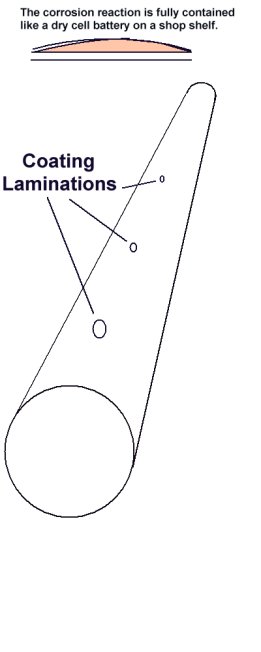
Cathodic Protection Training Course

One glass flower vase has water added to represent a situation where there are 3 potentials but no conductor.
This can be likened to a situation on a pipeline, as drawn, where there are three places where the coating has disbonded from the pipe metal but there is no hole in the caoting material.
It will be seen in the glass vase that the water stays in each of the partitions of the glass and the level of each is different as there is no way to complete the circuit and reach equilibrium between them.
The same is true of the electrical status of the items between which we are making the cathodic protection measurement. We make contact with a piece of metal at the test post and the ground on which we place the Cu/CuSO4 electrode. We obtain a single readng on the meter and believe that this is the potential difference between the pipe line metal and the soil, hence the name 'pipe-to-soil measurement'.
It is widely believed that this voltage is related to the corrosion reaction that that we are trying to influence, but this is not true.

In the glass vase we can see can be seen that the water levels are below that of the connecting tube and therefore gravity cannot drive the water to equalise between the three tubes. In the case of the drawing of the pipeline it can be seen that the electrical equilibrium of each of the 'pockets' of electrolyte cannot equalise as they have no common electrolytic path.
It can be seen that the water in each tube has a level surface as a natural result of gravitational pull and it is known that each pocket of electrolyte will reach it's own equilibrium due to the codification of science provided by Newton, Einstein, Nernst and Gibbs.